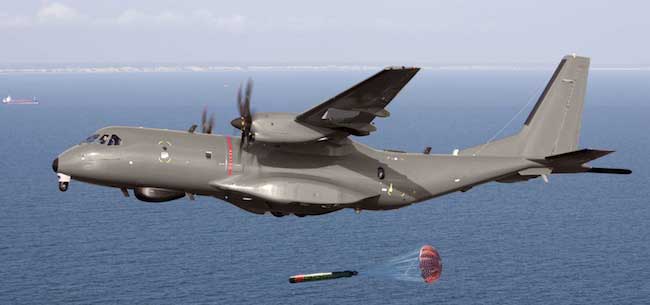
Airbus Military has launched a new member of the C295 medium transport and surveillance aircraft – the C295W. The company will make its public debut at the Paris Air Show later this month.
The new model, equipped with uprated engines and winglets will be available in 2014. Company sources said that the new version will become standard for all Seville assembled CN295 beginning from the fourth quarter of 2014, following the completion of certification, expected by the middle of next year.

The aircraft uses the same Pratt & Whitney Canada PW127 turboprops engines which power all versions of the C295. The increased power is available from implementing new procedures recently certified by Canada and Spain, permitting operation in the climb and cruise phases at higher power settings at the discretion of the operator. When implemented at higher altitude and hot temperatures, these procedures improve operation over very high terrain such as the Andes or Himalaya mountains with only a minor influence on maintenance cost. The winglets were demonstrated in flight-trials which showed positive results for a weight penalty of only around 90kg.
According to Airbus, the new model will be optimized for operation from “hot and high“ airfields, where the company expects payload increases in excess of 1,000kg; improvements are also likely to provide operators with enhanced performance in all flight phases. The new features will also provide an overall reduction in fuel consumption of around 4% depending on configuration and conditions.
In intelligence, surveillance and reconnaissance (ISR) roles such as airborne early warning (AEW) the enhancements will increase endurance by 30-60 minutes and permit an operating altitude up to 2,000ft higher than now. The C295 is currently used in maritime surveillance. Airbus is also developing an airbore surveillance version using an Elta radar.
C295 aircraft are currently operational with a number of air forces and navies, including: Spain, Portugal, Poland, Indonesia, Mexico, Algeria, Brazil and Egypt are the main operators of this type, with Chile, Colombia, the Czech Republic, Finland, Ghana, Indonesia, Jordan, Kazakhstan and Oman operating 2-5 aircraft each.
Asia is becoming a most important market for the C295, where Airbus Military is leveraging its partnership with Indonesia based PT Dirgantara Indonesia (DI) manufacturing and support capability to promote its market position. Last month Airbus Military embarked on a marketing tour to six ASEAN countries, sending a CN235 (the Indonesian designation of C295, operated with the Indonesian Ministry of Defense). The tour visit included the Philippines, Brunei Darussalam, Vietnam, Thailand, Myanmar and Malaysia.
“The visits will allow explanations on the specific capabilities of the CN235 and the NC212i, an upgraded version of the C212 launched in November 2012 between PTDI and Airbus Military with new avionics and autopilot systems as well as an increased passenger seating, increasing its cost efficiency significantly,” Airbus Military said. Vietnamese Defense Minister Gen. Phung Quang Thanh said Hanoi plans to send a delegation to study the Indonesian invitation. Thanh recently met with Indonesian Deputy Defense Minister Sjafrie Sjamsoeddin in Hanoi.























